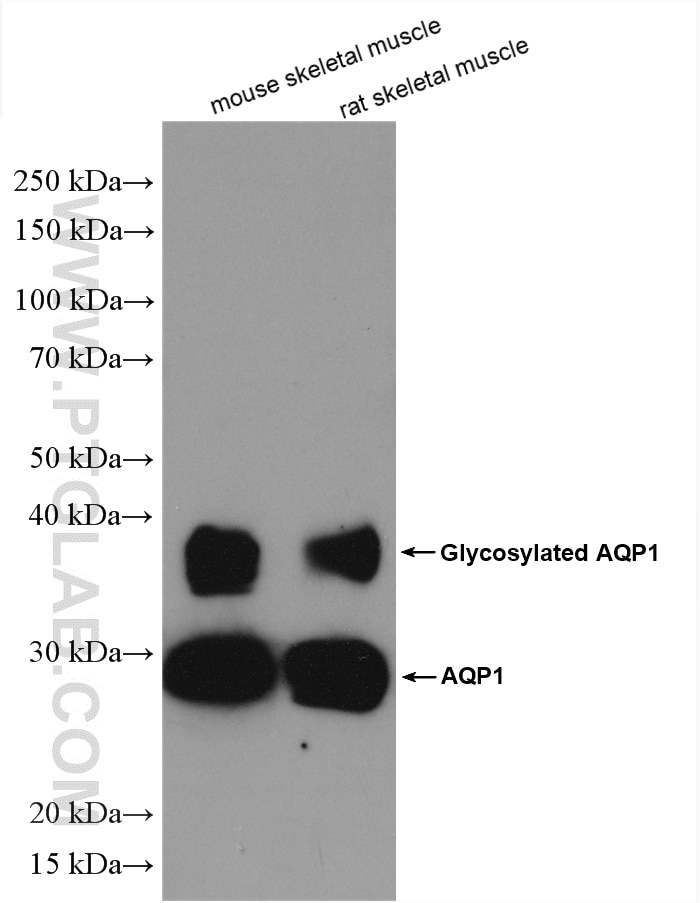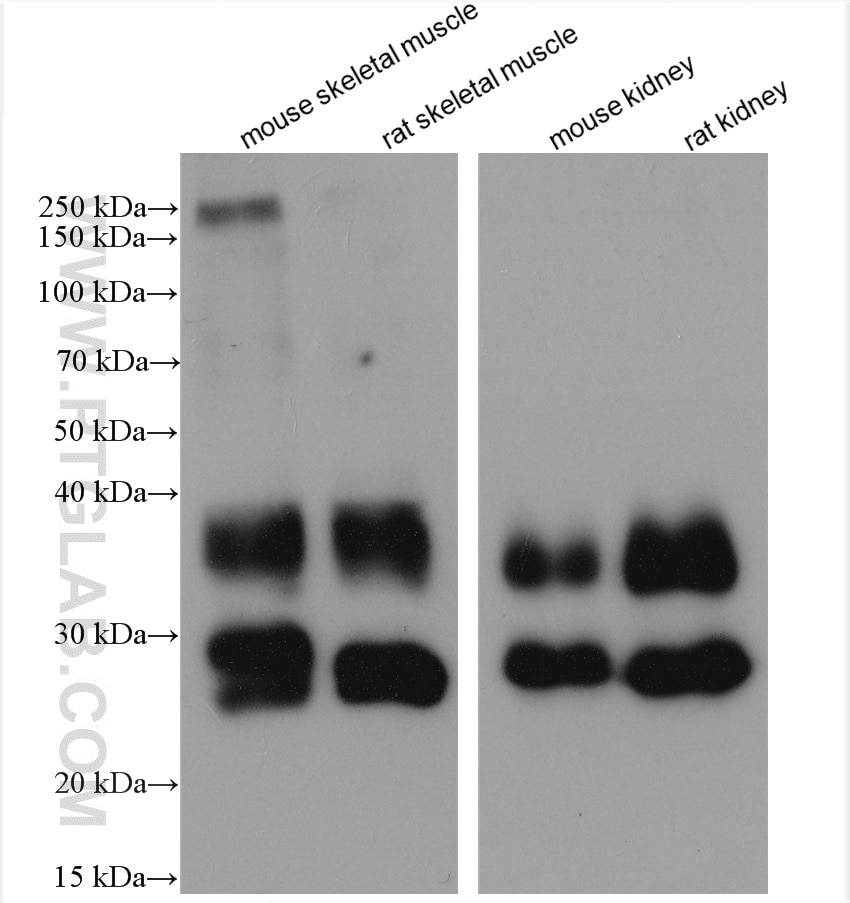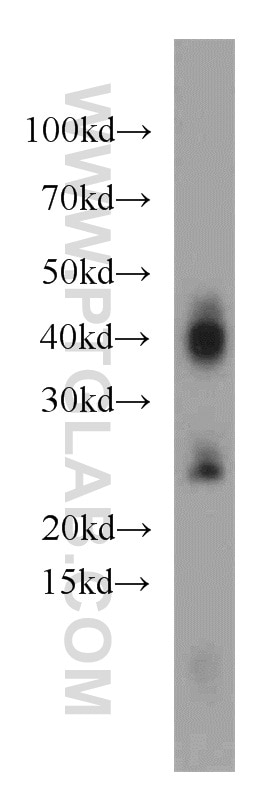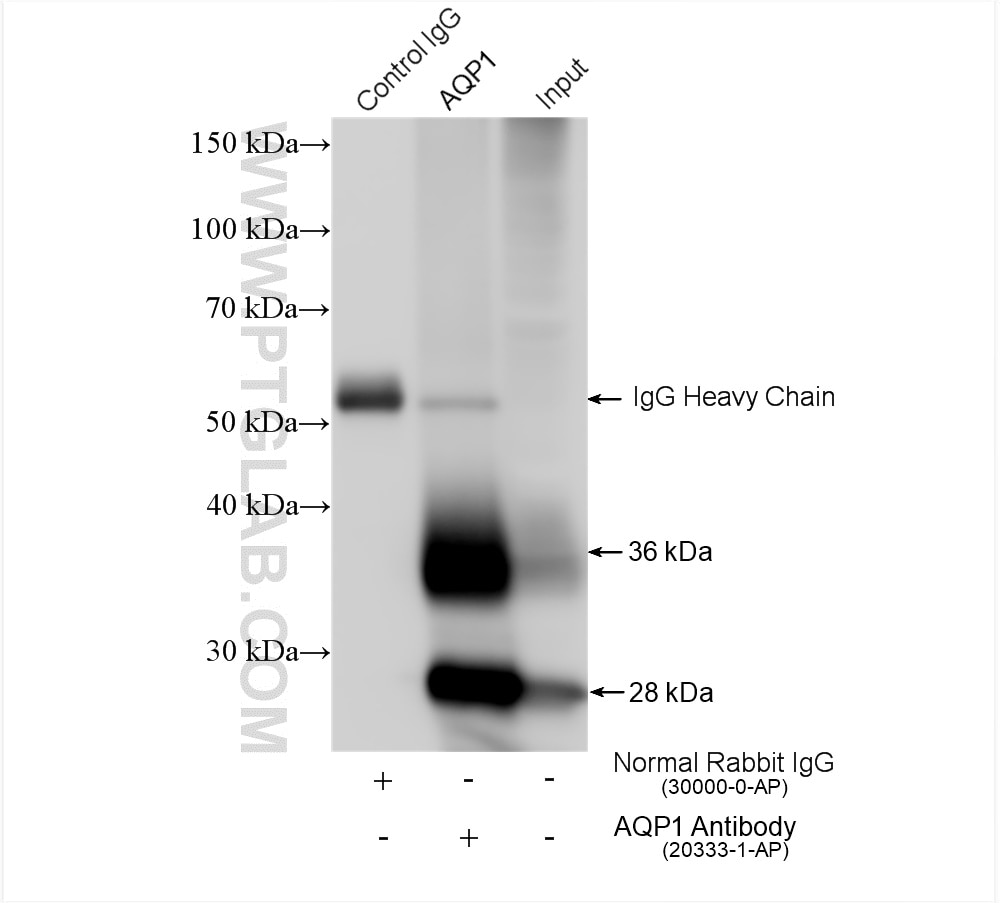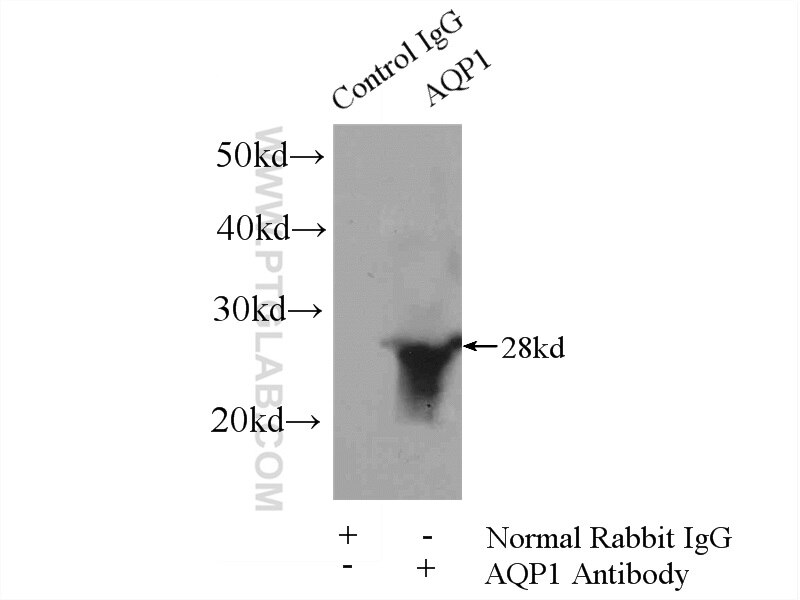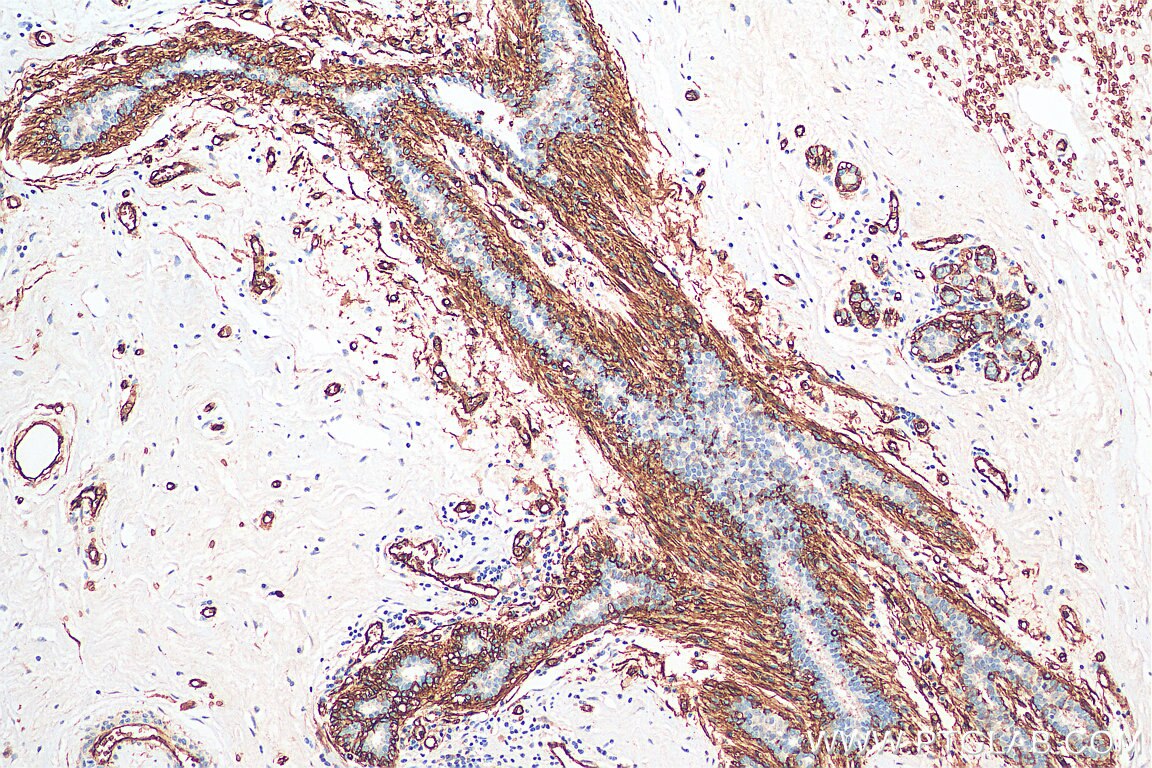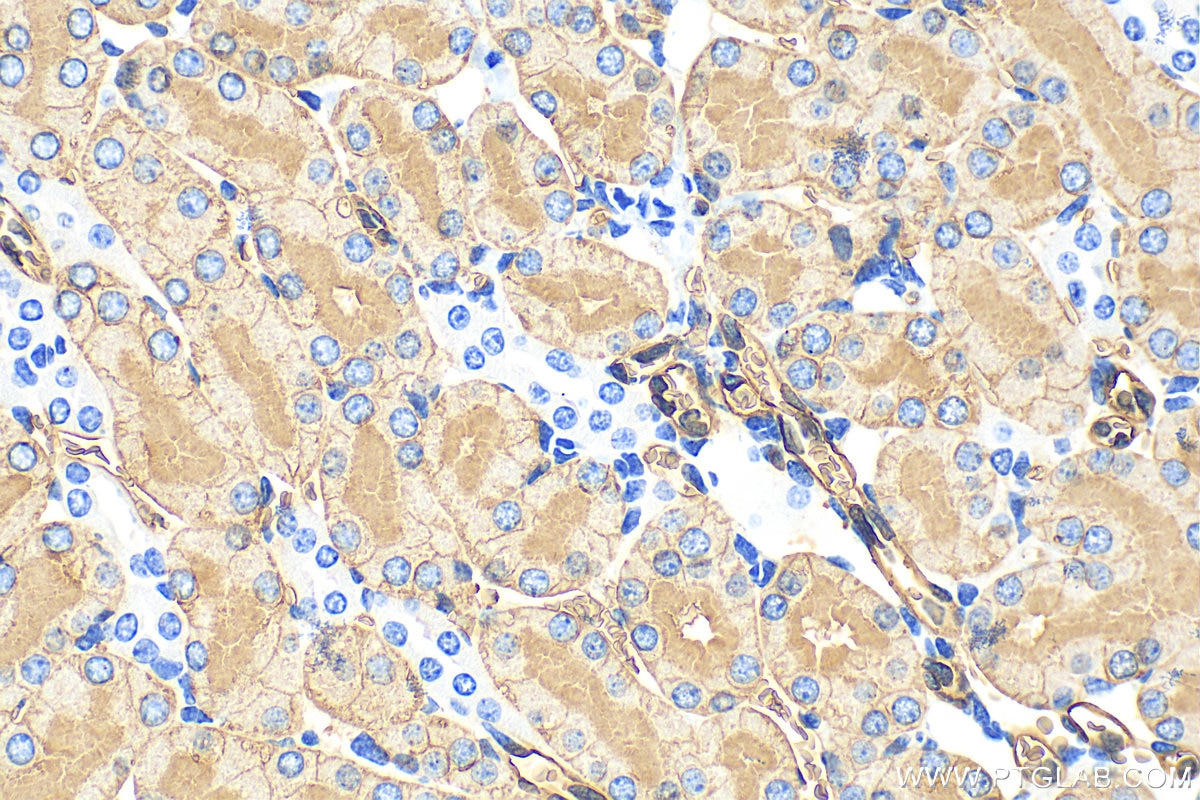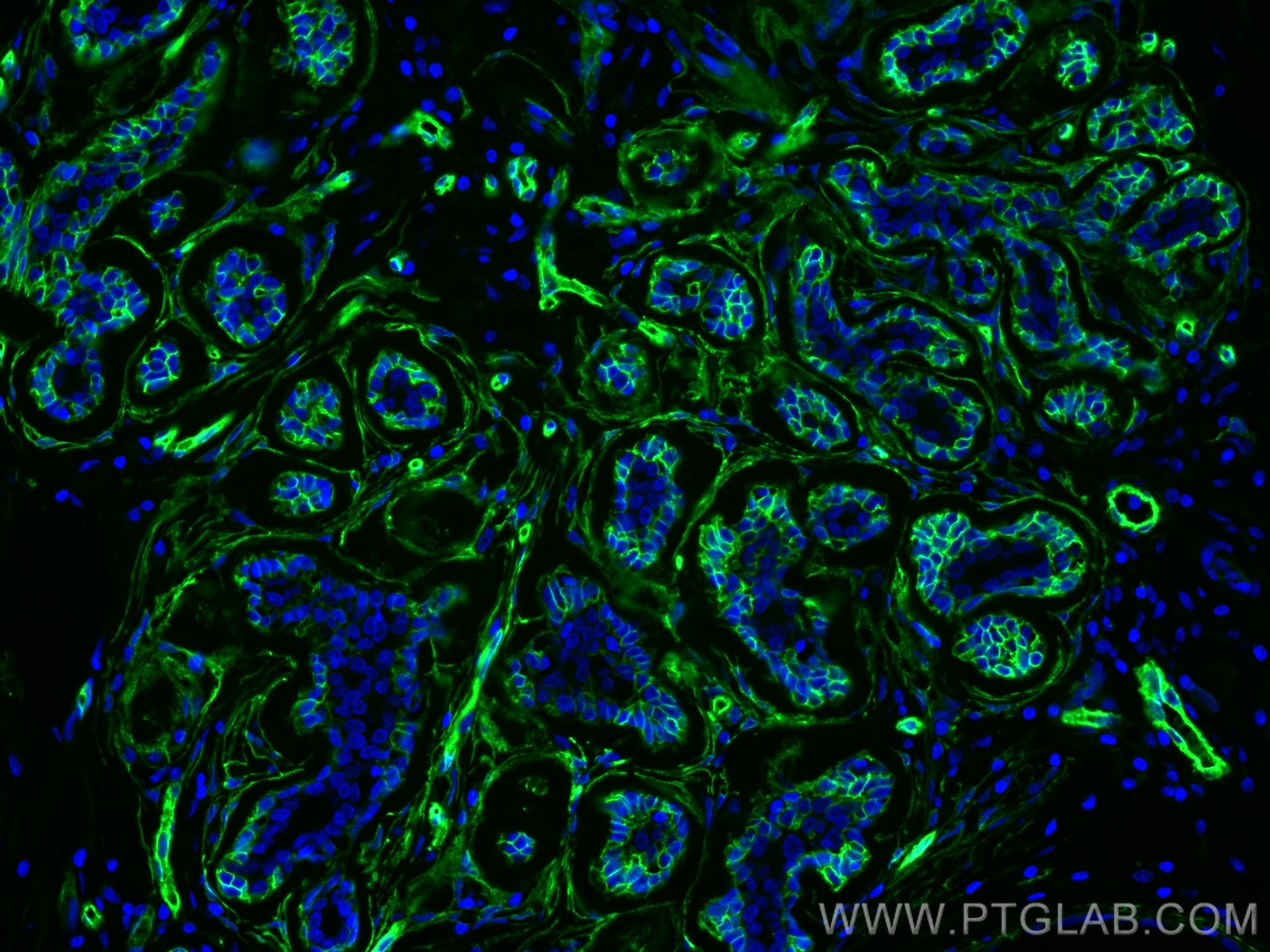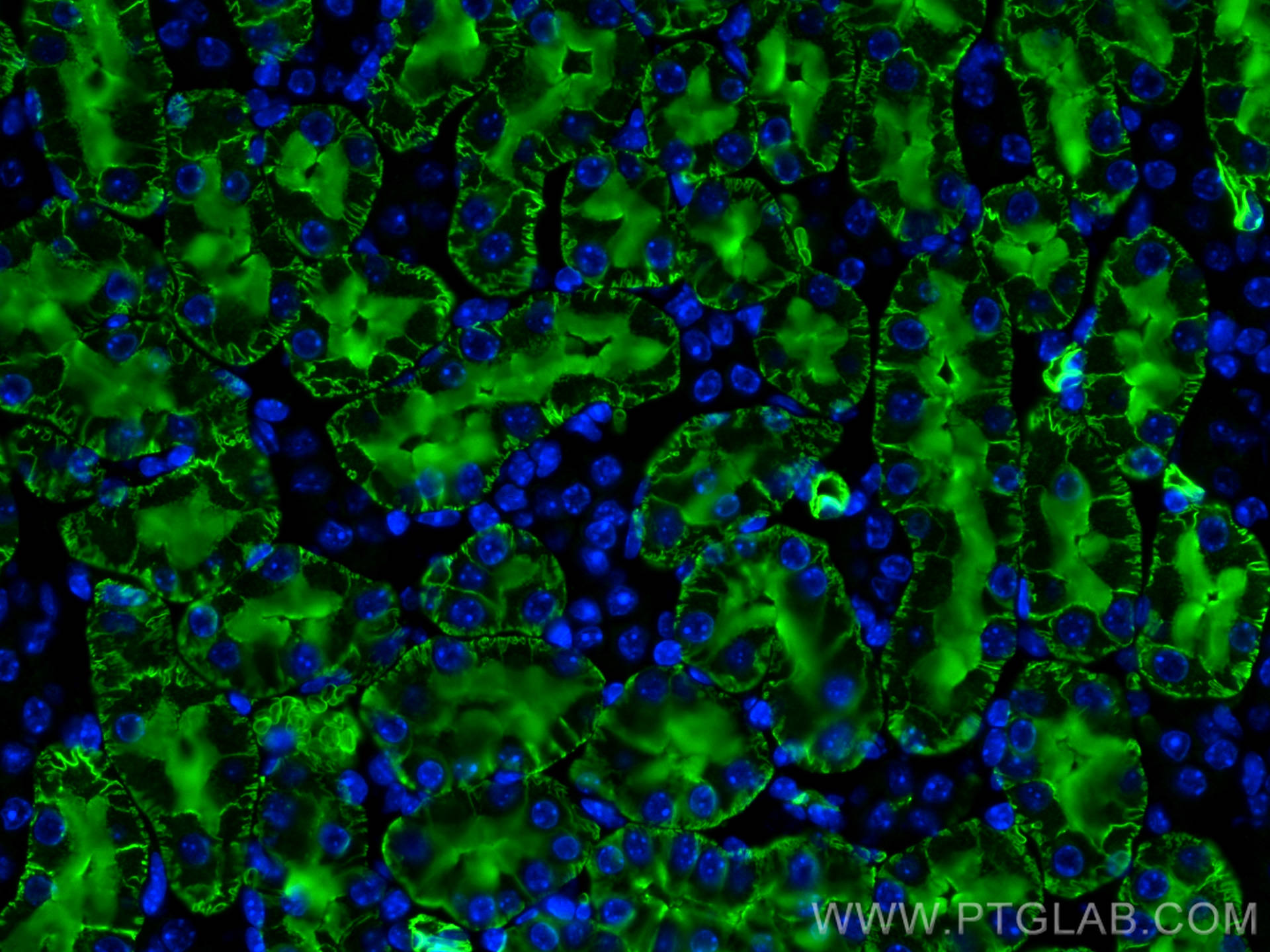- Phare
- Validé par KD/KO
Anticorps Polyclonal de lapin anti-AQP1
AQP1 Polyclonal Antibody for WB, IHC, IF-P, IF-Fro, IP, ELISA
Hôte / Isotype
Lapin / IgG
Réactivité testée
Humain, rat, souris et plus (4)
Applications
WB, IHC, IF-P, IF-Fro, IP, ELISA
Conjugaison
Non conjugué
N° de cat : 20333-1-AP
Synonymes
Galerie de données de validation
Applications testées
| Résultats positifs en WB | tissu de muscle squelettique de souris, muscle squelettique de rat, rein de rat, rein de souris, tissu cardiaque humain |
| Résultats positifs en IP | tissu rénal de souris, tissu de muscle squelettique de souris |
| Résultats positifs en IHC | tissu rénal de souris, tissu de cancer du sein humain, tissu rénal humain il est suggéré de démasquer l'antigène avec un tampon de TE buffer pH 9.0; (*) À défaut, 'le démasquage de l'antigène peut être 'effectué avec un tampon citrate pH 6,0. |
| Résultats positifs en IF-P | tissu de cancer du sein humain, tissu rénal de souris |
| Résultats positifs en IF-Fro | mouse breast cancer, |
Dilution recommandée
| Application | Dilution |
|---|---|
| Western Blot (WB) | WB : 1:5000-1:50000 |
| Immunoprécipitation (IP) | IP : 0.5-4.0 ug for 1.0-3.0 mg of total protein lysate |
| Immunohistochimie (IHC) | IHC : 1:3000-1:12000 |
| Immunofluorescence (IF)-P | IF-P : 1:50-1:500 |
| Immunofluorescence (IF)-FRO | IF-FRO : 1:200-1:800 |
| It is recommended that this reagent should be titrated in each testing system to obtain optimal results. | |
| Sample-dependent, check data in validation data gallery | |
Applications publiées
| KD/KO | See 2 publications below |
| WB | See 37 publications below |
| IHC | See 27 publications below |
| IF | See 29 publications below |
| IP | See 2 publications below |
| FC | See 2 publications below |
Informations sur le produit
20333-1-AP cible AQP1 dans les applications de WB, IHC, IF-P, IF-Fro, IP, ELISA et montre une réactivité avec des échantillons Humain, rat, souris
| Réactivité | Humain, rat, souris |
| Réactivité citée | rat, bovin, canin, Chèvre, Humain, porc, souris |
| Hôte / Isotype | Lapin / IgG |
| Clonalité | Polyclonal |
| Type | Anticorps |
| Immunogène | AQP1 Protéine recombinante Ag14093 |
| Nom complet | aquaporin 1 (Colton blood group) |
| Masse moléculaire calculée | 269 aa, 29 kDa |
| Poids moléculaire observé | 25-28 kDa, 35-50 kDa |
| Numéro d’acquisition GenBank | BC022486 |
| Symbole du gène | AQP1 |
| Identification du gène (NCBI) | 358 |
| Conjugaison | Non conjugué |
| Forme | Liquide |
| Méthode de purification | Purification par affinité contre l'antigène |
| Tampon de stockage | PBS with 0.02% sodium azide and 50% glycerol |
| Conditions de stockage | Stocker à -20°C. Stable pendant un an après l'expédition. L'aliquotage n'est pas nécessaire pour le stockage à -20oC Les 20ul contiennent 0,1% de BSA. |
Informations générales
AQP1 is a member of aquaporins (AQPs) that are small membrane-spanning proteins facilitating water transport. AQP1 is expressed in most tissues in the mammalian body. Alterations of AQP1 expression have been linked to variety of diseases, including cancer. The predicted molecular weight of AQP1 is around 28 kDa, while highly glycosylated form can also be observed around 35-50 kDa. (PMID:20965731,16508653, 1530176).
Protocole
| Product Specific Protocols | |
|---|---|
| WB protocol for AQP1 antibody 20333-1-AP | Download protocol |
| IHC protocol for AQP1 antibody 20333-1-AP | Download protocol |
| IF protocol for AQP1 antibody 20333-1-AP | Download protocol |
| IP protocol for AQP1 antibody 20333-1-AP | Download protocol |
| Standard Protocols | |
|---|---|
| Click here to view our Standard Protocols |
Publications
| Species | Application | Title |
|---|---|---|
J Extracell Vesicles Quantification of urinary podocyte-derived migrasomes for the diagnosis of kidney disease | ||
Theranostics Histone H3K27 methyltransferase EZH2 regulates apoptotic and inflammatory responses in sepsis-induced AKI | ||
Proc Natl Acad Sci U S A Direct visualization of the arterial wall water permeability barrier using CARS microscopy. | ||
Cell Rep Multicilia dynamically transduce Sonic Hedgehog signaling to regulate choroid plexus functions |
